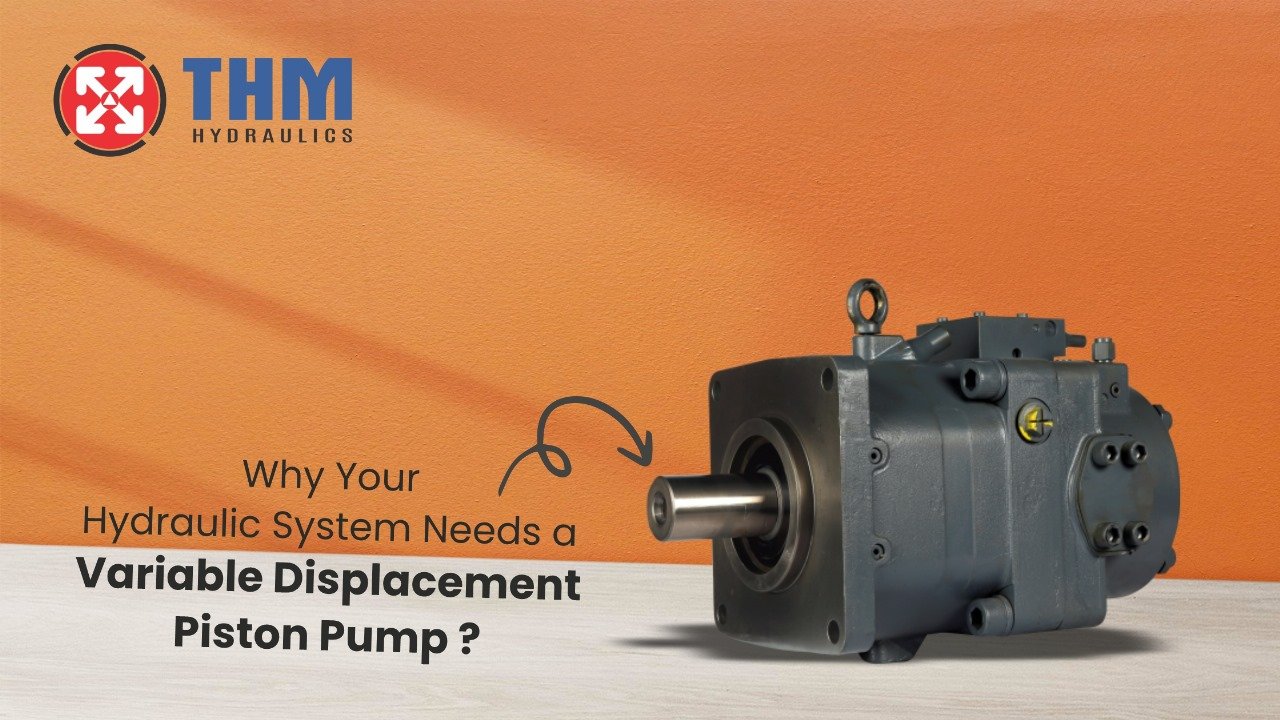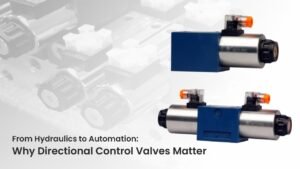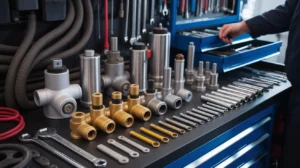The most important part of making your hydraulic system efficient, controllable and powerful is the variable displacement piston pump. It is changing the way industries use hydraulic power, mainly in places where being energy efficient, precise and able to handle changing loads is most important.
Main Components Include:
- Pistons are placed in a circular formation.
- A swashplate that can move to control the piston stroke
- Ports used for inlet and outlet.
How It Works
The axial piston pump variable displacement in a hydraulic system changes the swashplate angle to adjust the length of the piston stroke. A larger angle allows more flow, whereas a smaller angle decreases the flow and it can even stop the flow if required.
Because of this mechanism, people can:
- The ability to regulate hydraulic flow as it happens
- Less heat is produced.
- Load-sensing capabilities
Key Benefits of Using a Variable Displacement Pump
- Energy Efficiency
A major benefit is the energy savings you get. Adjusting the displacement means the pump operates just enough to get the job done which saves energy.
- Less heat means the battery can last longer
Since the pump doesn’t always work at full capacity, it generates less heat which helps system components and fluids last longer.
- Lightweight and Compact Designs
With effective flow control, the parts in a system can be designed more compactly and perform better which is ideal for mobile hydraulic systems and small spaces.
- Better Control of the System
They include advanced control features (such as load-sensing and pressure compensation) which make their operation more stable and precise.
Use of Applications in Different Types of Hydraulic Systems
Some hydraulic systems such as the ones listed, use variable displacement pumps.
- Presses and injection molding machines are part of industrial machinery.
- Excavators and backhoes are the main types of construction equipment.
- Farming Tools: Tractors, harvesters
- Marine Systems: Winches, steering gears
- Aerospace: Actuation systems
In every case, the variable displacement piston pump helps achieve better results and lower energy costs.
How to Select the Correct Variable Displacement Pump
Think about these points when picking a variable displacement pump for your application:
- Check that the maximum pressure of the pump is sufficient for your system.
- Check that the pump can handle the lowest and highest flow rates you need.
- System Type: Think about if your system needs pressure compensation or load-sensing.
- Select a well-known brand that has good customer support and spare parts when needed.
Fixed vs. Variable Displacement Pumps
| Feature | Fixed Displacement Pump | Variable Displacement Pump |
| Flow Rate | Constant | Adjustable |
| Efficiency | Lower | Higher |
| Control | Limited | Advanced (load-sensing, pressure-compensated) |
| Heat Generation | More | Less |
| Initial Cost | Lower | Higher |
| Lifecycle Cost | Higher | Lower |
How to Properly Maintain Axial Piston Variable Displacement Pumps
These are the best practices to use with your axial piston pump variable displacement:
- Regularly go over your vehicle to find any leaks, wear and vibration.
- Check and maintain the right levels and cleanliness of all the fluids.
- Change your filters when it is time as per the manufacturer’s instructions.
- Cooling: Stop the system from getting too hot, especially when it is working hard.
- Always go with OEM parts when you need to replace anything in your car.
Conclusion – Upgrade Efficiency with Variable Displacement Pumps
For any business that depends on hydraulic power, upgrading to a variable displacement piston pump is a good call. If you are using industrial, mobile or farm equipment, the technology in advanced pumps can help make your work more efficient, safe and durable.
THM Huade provides a reliable collection of variable displacement axial piston pumps that are made for top performance and energy savings. When you know the benefits of variable displacement designs, you can improve your hydraulic system and lower costs in the long run.
FAQ’s:
Q1. What is the function of a variable displacement pump?
A variable displacement pump changes the flow and pressure of hydraulic fluid according to what the system requires. It allows you to use less energy and increases how well the system runs.
Q2. How does variable displacement work?
The pump changes the swash or cam plate at the center which in turn changes how far the pistons move and controls the pump’s output.
Q3. What is the most common variable displacement pump?
The axial piston pump is the main type of variable displacement pump and it is used in both industrial and mobile hydraulic systems because of its efficiency and control.
Q4. How do variable displacement piston pumps adjust output flow?
The variation in swash plate angle allows them to control how much hydraulic fluid is delivered with each revolution.
Q5. Which pump type is a variable displacement?
Most variable displacement pumps in hydraulic systems are either axial piston pumps or bent axis piston pumps.



